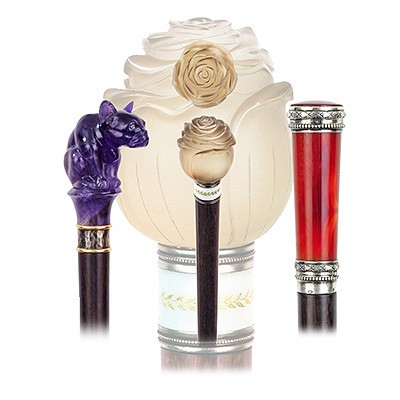Hardstone Figural Black Boy Brigg Cane
Lot 34
About Seller
Kimball Sterling
125 West Market Street
Johnson City, TN 37604
United States
Family-owned and family-run Johnson City Tennessee auction business for 25 years. Selling antiques and collectables for 38 years. Kimball M. Sterling, Inc. was founded and is owned by Kimball and Victoria Sterling, time and again, they have laid solid claim to world-wide attention and renown with an...Read more
Categories
Estimate:
$2,500 - $3,000
Absentee vs Live bid
Two ways to bid:
- Leave a max absentee bid and the platform will bid on your behalf up to your maximum bid during the live auction.
- Bid live during the auction and your bids will be submitted real-time to the auctioneer.
Bid Increments
| Price | Bid Increment |
|---|---|
| $0 | $10 |
| $100 | $25 |
| $500 | $50 |
| $1,000 | $100 |
About Auction
By Kimball Sterling
Dec 3, 2022
Set Reminder
2022-12-03 13:00:00
2022-12-03 13:00:00
America/New_York
Bidsquare
Bidsquare : The 2022 Cane Masterpiece Auction
https://www.bidsquare.com/auctions/kimball-sterling/the-2022-cane-masterpiece-auction-11295
The European Masterpiece Cane Collection Kimball Sterling kimballsterling@earthlink.net
The European Masterpiece Cane Collection Kimball Sterling kimballsterling@earthlink.net
- Lot Description
-1900 -Wheel cut of a rare black Nephrite jade to depict a lovely Black Boy head with a fez, the knob shows naturalistic details in exceptional finesse and takes advantage of a smooth and waxy surface in part glossy polished to accent its enigmatic fascination. -The Black Boy head comes with an 18 karat yellow gold collar marked “BRIGG” and a full set of London hallmarks with a square shaped “e” with cut corners for 1900 besides a “C.C” maker’s mark for Charles Cooke’s, (registered Jan 1888 and 1898, 1912) Fifth Street London until 1899; other London addresses subsequently, stick mount as specialty, Supplied stick mounts, etc. to Thomas Brigg & Sons. High grade flamed rosewood shaft of natural red-brown hues and a metal ferrule. -So-far, never seen in such high quality, this cane is charm pure. The signature Brigg, one of the ever-best cane retailers, adds to its desirability. It could either be a decorative item inspired by the numerous Black Boy brands advertisements of its period or a subtle refer to the man in the fez as a symbol of worldliness and solidarity in the post-Civil War South and Black Shriners of a Medina lodge. Black families who wanted to buy a home or open a business in the early 1900s could rarely rely on Jim Crow-era bank loans. -They could instead turn to mutual aid societies, groups like New Orleans’ famous “Krewes.” -H. 1 ¾” x 1 ¼”, O.L. 37 ¾” -$2,500-$3,000 -The term Fez is Moroccan in origin from the town of Fes. The hat itself is either of Moroccan or Turkish origin. It was popular especially during the later period of the Ottoman Empire and its use spread throughout the empire. The Fez also called Tarboosh is a felt headdress in the shape of a short cylindrical peakless hat, usually red, and sometimes with a black tassel attached to the top. -Brigg Umbrella Co. was established in London in 1836, later changing its name to Brigg & Son and becoming the leading cane retailer of his generation, possibly the greatest of all times. -The firm’s main branches were in London 23, St. James’s street and Paris 33, Avenue de l’Opéra. According to their catalog at the turn of the 20th century, they also had agencies in Nice, Madrid, Naples and Rome. -For those in the know, Brigg became synonymous with gentleman luxury items and canes in particular. -Its unique position in cane history and European culture owed much to the historical luminaries who wore Brigg canes, including, among Napoleon, Marie Antoinette, Churchill as well as the famous writers who mentioned Brigg in their works, like Pushkin, Balzac and Victor Hugo. It is said that Brigg holds a special place in our cultural heritage because its founder set the standards by which all fine cane making has since been judged.
- Shipping Info
-
Each auction has different shipping terms but the buyer always pays. Shipping will be delayed in this auction due to delay of customs.Canes:After payment has been received we will contact you.
- Buyer's Premium
-



 EUR
EUR CAD
CAD AUD
AUD GBP
GBP MXN
MXN HKD
HKD CNY
CNY MYR
MYR SEK
SEK SGD
SGD CHF
CHF THB
THB


















